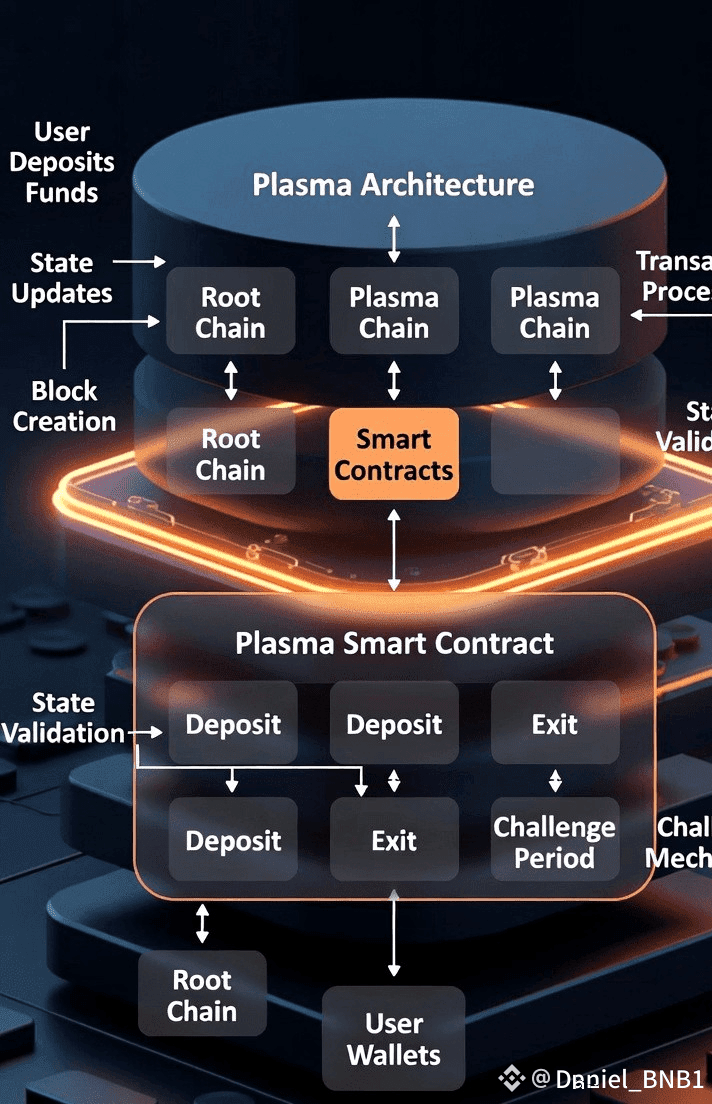Plasma was designed as a solution to one of Ethereum’s biggest challenges—scaling without losing security. Instead of processing every transaction on the main chain, Plasma creates a system of smaller connected blockchains known as child chains. These chains operate independently but rely on Ethereum’s smart contracts to maintain order and trust. The smart contracts act as the backbone of the entire framework, managing deposits, withdrawals, and dispute resolutions while ensuring that the integrity of user funds always remains protected by Ethereum’s security layer.
At the heart of Plasma’s design lies the bridge contract on Ethereum, the point where users lock their funds before entering the child chain. Once funds are deposited, users gain a representation of their assets on the Plasma chain, allowing them to transact quickly and cheaply off-chain. This process enables Plasma to scale transaction throughput dramatically while retaining Ethereum’s auditability and trust. If anything suspicious occurs, users can safely return their funds to Ethereum through well-defined exit mechanisms.
Exiting is one of the most critical elements of Plasma’s architecture. Since operators manage the Plasma chains off-chain, users need a secure way to retrieve their assets independently. The exit system does exactly that. It allows users to submit proof of ownership, triggers a challenge period where fraudulent exits can be contested, and then returns funds to the rightful owner on Ethereum. This process ensures that even in the worst-case scenario—operator failure or fraud—user assets remain safe and retrievable.
Fraud prevention further strengthens this model. Plasma smart contracts empower any participant to submit fraud proofs if a malicious actor attempts to falsify a transaction or tamper with data. These proofs are verified directly on Ethereum, and cheaters face immediate penalties. It transforms the system from one based on trust to one built on verifiable accountability, where security is enforced by the protocol itself rather than intermediaries.
Another key mechanism is the storage of Merkle roots from Plasma chain states on Ethereum. These cryptographic summaries anchor all off-chain activity to the main chain, creating a permanent record that can be referenced in case of disputes. This ensures that while transactions happen rapidly off-chain, their integrity remains tied to Ethereum’s immutable ledger. It’s an elegant balance between scalability and transparency.

Ultimately, Plasma’s smart contracts make the entire system possible. They serve as the connective tissue between high-speed off-chain operations and Ethereum’s secure foundation. By combining efficiency with uncompromising trust, they embody what scalable decentralization truly means. Even as Ethereum evolves with rollups and new architectures, the principles behind Plasma’s contract logic continue to influence how we think about security, exits, and the relationship between mainnet and Layer-2 innovation.


